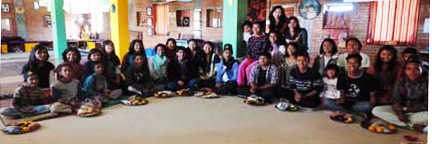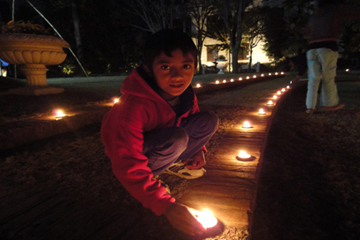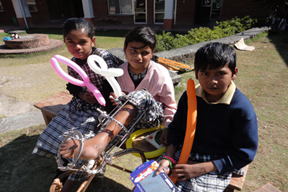We love to celebrate the Nepali festivals at Ama Ghar, as performing these rituals bonds us as a family of various religious and ethnic backgrounds.

Traditionally, the festival season starts right after the rice harvest, with a 10-day family holiday of Dashain. Most of the children have aunts, uncles and cousins in their villages, so as many of them as possible go back for a Dashain visit. For those who stay at Ama Ghar, the elders give Tika to the younger ones. Tika is a mixture of multi-colored Tika powders with rice grains, which is placed on the forehead as a blessing. We are always pleased when our older children who have “graduated” from Ama Ghar come home to receive Tika, as Sarada, Bindu and Rupmala did this year.


Another Ama Ghar tradition for the holidays is to visit the local Orthopedic Hospital to entertain the children who are restricted to the hospital and cannot go home to their families. We always enjoy sharing balloons, drawing with the children, playing cards and then stopping for a picnic on the way home.

Tihar, which we wrote about in our last blog, is the next festival after Dashain. It includes the Festival of Lights, Mha Puja (self-blessing), and Bhai Tika, when sisters give Tika to their brothers. The sisters bless their brothers with an intricate seven colored Tika, andpresent them with trays of fruit. Mallas (flower garlands)are exchanged and the sisters are given money. This moving ceremony truly unites us as a family.
We are so glad to have all of our friends around the world as part of our Ama Ghar family – we wish you could all be with us to celebrate these wonderful holidays!
